
This parent guide supports parents in helping their child at home with the 8th grade Science content.
- Subject:
- Science
- Material Type:
- Reference Material
- Vocabulary
- Author:
- Kelly Rawlston
- Letoria Lewis
- Date Added:
- 10/11/2022

This parent guide supports parents in helping their child at home with the 8th grade Science content.

This resource accompanies our Rethink 8th Grade Science course. It includes ideas for use, ways to support exceptional children, ways to extend learning, digital resources and tools, tips for supporting English Language Learners and students with visual and hearing impairments. There are also ideas for offline learning.

With this resource, students will play 20 questions using the periodic table and a list of common molecules.

With this resource, students will look at one object and evaluate both the physical and chemical properties.
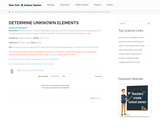
Students will understand how the periodic table is organized into distinct sections of similar characteristics.
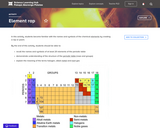
Students become familiar with the names and symbols of the chemical elements by creating a rap or poem.
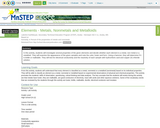
In this activity, students will investigate several properties of the given elements and decide whether each element is a metal, non-metal or a metalloid. They will examine the appearance of the given samples and note the color, luster and form. Using a hammer, they will determine if it is brittle or malleable. They will test for electrical conductivity and the reactivity of each sample with hydrochloric acid and copper (II) chloride solution.

Students will test whether iron is present in cereal.
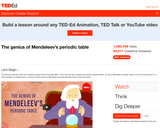
This brief video lesson discusses Mendeleev's work with elements and the organization of the periodic table. Discussion/assessment questions and suggested supplemental resources are also included.

Students learn that the properties of matter help to organize elements on the periodic table.

In this activity, students investigate a puzzle. They are given a set of cards with various properties. Each card has anywhere from 2 to 6 different properties depending on the level of the students and each set of cards has one or two cards missing. The object of the puzzle is to organize and group cards to look for a pattern in order to be able to predict the properties of the missing piece(s). Once the puzzles are completed the students learn about the process Mendeleev and other forerunners used in developing the first periodic tables

Students will construct 3-dimensional representations of each known element of the periodic table using cereal-sized boxes as their mediums. By creating these models, students will gain an in-depth understanding of their chosen element's discovery, history, unique properties, and place on the Modern Periodic Table. Students will also be able to identify and describe basic periodic trends.

This resource supports English language development for English Language Learners. Students will study various aspects of atomic theory and elements and incorporate language objectives in this SIOP unit. The resource includes targeted vocabulary, student worksheets, and activities across all language domains.
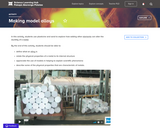
Students use plasticine and sand to explore how adding other elements can alter the ductility of a metal.

This resource is a compilation of text, videos, and other elements that serves as a multimedia learning experience for students. With this resource, students will learn about the three main categories of elements and their properties.
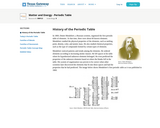
This resource is a compilation of text and other elements that serves as a multimedia learning experience for students. The resource reviews how the structure of the Periodic Table is based on the physical and chemical properties of the elements.

In this activity, students organize fasteners by their properties in order to better understand the basis of the arrangement of the periodic table of elements.

In this activity, students create a 3-D way to visualize trends on the periodic table. By using straws (or other objects) they will show how the various properties of elements are used to organize elements on the table.
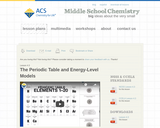
Students will focus on the first 20 elements. Students will first look at a diagram and animation to understand the basic pattern of the arrangement of electrons on energy levels around an atom. Students can be given cards with information about the electrons and energy levels for each of the first 20 atoms. They can try to correctly match the cards with the element. This lesson includes, with direct links to, a student activity sheet, an image of an energy level cross section, an image of an oxygen atom, an image of a periodic table of energy levels, videos on sodium in water, potassium in water and calcium in water as well as sodium, potassium and calcium in acid, an answer key for the student activity sheet and a teacher background section on energy level models.

Students will play the role of mystery elements and make observations as the elements react and try to determine patterns.